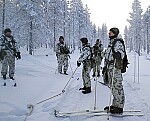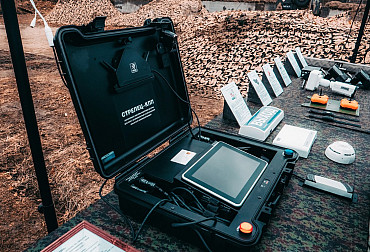Could this smart box save Osprey pilots’ lives? The Military thinks so
A new piece of technology may offer a lifeline for one of the U.S. military’s most complex and controversial aircraft – the V-22 Osprey. In a significant move toward improving flight safety, the U.S. Navy has awarded a contract to defense technology firm Shift5 to test its predictive maintenance device aboard the Osprey in hopes of identifying critical mechanical issues – specifically, the elusive and dangerous "hard clutch engagements" before they result in disaster.

A New Weapon in the Fight Against Mechanical Failures
The contract, awarded by Naval Air Systems Command (NAVAIR), enables the Marine Corps’ operational test squadron to begin evaluating Shift5’s manifold device. The goal: continuously monitor operational data on V-22 Ospreys and create actionable rules to detect and respond to potential maintenance problems in real-time.
“Given the criticality of solving some of these life-threatening issues that are happening on the V-22, it really is all about providing real-time insights to the crew for situational awareness so they can make better decisions,” said Josh Lospinoso, CEO and co-founder of Shift5.
Tackling the “Hard Clutch” Mystery
Among the Osprey’s most pressing mechanical issues is the phenomenon known as a hard clutch engagement. This occurs when the clutch connecting the aircraft’s engine to the propeller rotor momentarily slips and then reengages, potentially causing violent lurches, structural damage, and tragically fatal crashes.
One such incident occurred in June 2022, when five Marines died in a crash in Southern California linked to a hard clutch engagement. Another CV-22B Osprey crash off the coast of Japan in November 2023 claimed the lives of eight airmen. The crash triggered a months-long grounding of all Ospreys across the U.S. military. The Air Force later confirmed a critical gear failure in the proprotor gearbox was to blame.
Shift5’s technology aims to change the narrative by offering real-time, in-flight monitoring of clutch behavior, potentially detecting the very signs that lead to such failures.
A Tablet-Sized Upgrade With Big Impact
Weighing just four pounds, the Shift5 device plugs into the Osprey’s existing data network and dramatically enhances the aircraft’s ability to collect, process, and display crucial operational data, especially clutch-related metrics. Previously, much of this information could only be accessed post-flight, after time-consuming and invasive inspections.
“In some cases, it's literally just taking data that already exists on a data bus and presenting it to the user,” Lospinoso explained.
The system can provide real-time readings of vibration intensity and frequency within the gearbox, helping aircrews identify signs of mechanical stress before a failure occurs. The device can also serve as a virtual co-pilot, issuing cockpit alerts and reminders to reduce the risk of human error during critical flight phases.
“Being an Osprey pilot is probably the most challenging job flying any aircraft of any kind,” Lospinoso said. “If they forget to take certain steps, it can be extremely dangerous. But there’s nothing in the cockpit alerting them to these conditions. Our device is almost like the equivalent of a seat belt reminder.”
What’s Next?
For now, Shift5’s device is in the testing phase under the oversight of the V-22 Joint Program Office. But the long-term vision is much broader: to install the system across the entire Osprey fleet. Lospinoso envisions a phased rollout, integrating the device during routine maintenance cycles.
He’s hopeful that full fielding could begin as early as the next quarter, bringing a much-needed boost in situational awareness and potentially saving lives.









